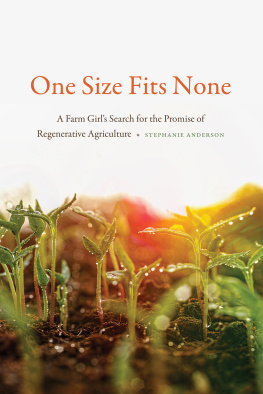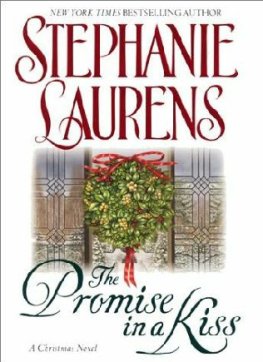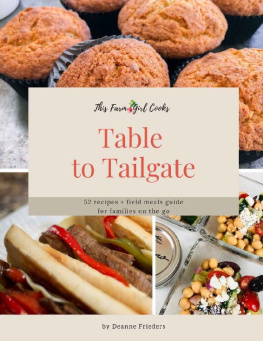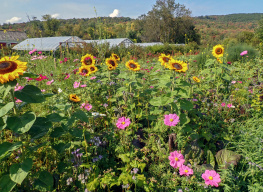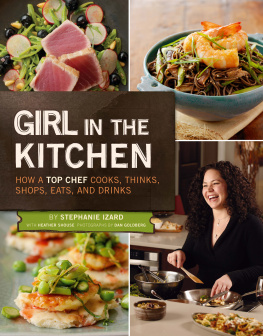Stephanie Anderson - One Size Fits None: A Farm Girl’s Search for the Promise of Regenerative Agriculture
Here you can read online Stephanie Anderson - One Size Fits None: A Farm Girl’s Search for the Promise of Regenerative Agriculture full text of the book (entire story) in english for free. Download pdf and epub, get meaning, cover and reviews about this ebook. year: 2019, publisher: University of Nebraska Press, genre: Science. Description of the work, (preface) as well as reviews are available. Best literature library LitArk.com created for fans of good reading and offers a wide selection of genres:
Romance novel
Science fiction
Adventure
Detective
Science
History
Home and family
Prose
Art
Politics
Computer
Non-fiction
Religion
Business
Children
Humor
Choose a favorite category and find really read worthwhile books. Enjoy immersion in the world of imagination, feel the emotions of the characters or learn something new for yourself, make an fascinating discovery.
- Book:One Size Fits None: A Farm Girl’s Search for the Promise of Regenerative Agriculture
- Author:
- Publisher:University of Nebraska Press
- Genre:
- Year:2019
- Rating:3 / 5
- Favourites:Add to favourites
- Your mark:
- 60
- 1
- 2
- 3
- 4
- 5
One Size Fits None: A Farm Girl’s Search for the Promise of Regenerative Agriculture: summary, description and annotation
We offer to read an annotation, description, summary or preface (depends on what the author of the book "One Size Fits None: A Farm Girl’s Search for the Promise of Regenerative Agriculture" wrote himself). If you haven't found the necessary information about the book — write in the comments, we will try to find it.
Stephanie Anderson: author's other books
Who wrote One Size Fits None: A Farm Girl’s Search for the Promise of Regenerative Agriculture? Find out the surname, the name of the author of the book and a list of all author's works by series.
One Size Fits None: A Farm Girl’s Search for the Promise of Regenerative Agriculture — read online for free the complete book (whole text) full work
Below is the text of the book, divided by pages. System saving the place of the last page read, allows you to conveniently read the book "One Size Fits None: A Farm Girl’s Search for the Promise of Regenerative Agriculture" online for free, without having to search again every time where you left off. Put a bookmark, and you can go to the page where you finished reading at any time.
Font size:
Interval:
Bookmark:
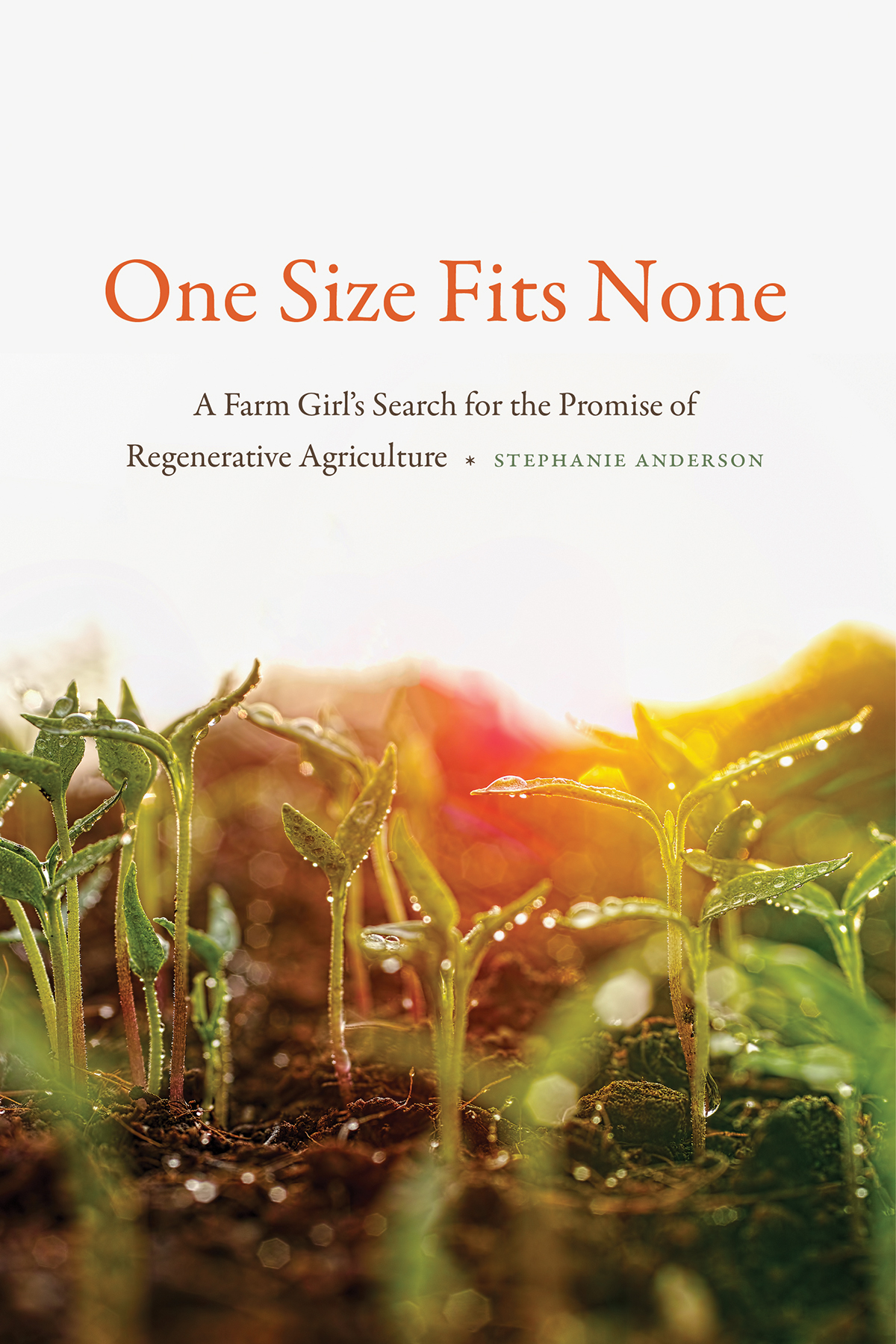
A brave and clear-eyed book by a farmers daughter about the problems in our agriculture and the factors that keep farmers from making it better. Stephanie Anderson... points the way toward an agriculture that regenerates our soil, our land, and our hopes.
Kristin Ohlson, author of The Soil Will Save Us
Stephanie Anderson deftly counterpoints profiles of innovative farmers with affectionate yet honest reflections on her familys farmand the compromises the industrial model demands. Anderson is a strong, new voice for an agriculture that works for public health, for nature, and for farmers.
Judith D. Schwartz, author of Cows Save the Planet and Water in Plain Sight
Stephanie Anderson
University of Nebraska Press | Lincoln and London
2019 by Stephanie Anderson
Portions of this manuscript originally appeared as In Search of Lost Grass in Kudzu House Quarterly 6, no. 3/4 (Winter Solstice 2016) and as The McFarthest Spot in Midwestern Gothic (Summer 2018).
Cover designed by University of Nebraska Press; cover image iStock / enviromantic.
All rights reserved
Library of Congress Cataloging-in-Publication Data
Names: Anderson, Stephanie (Stephanie Renee), 1987 author.
Title: One size fits none: a farm girls search for the promise of regenerative agriculture / Stephanie Anderson.
Description: Lincoln: University of Nebraska Press, 2019. | Includes bibliographical references.
Identifiers: LCCN 2018011998
ISBN 9781496205056 (pbk.: alk. paper)
ISBN 9781496211927 (epub)
ISBN 9781496211934 (mobi)
ISBN 9781496211941 (pdf)
Subjects: LCSH : Organic farmingUnited States. | FarmersUnited StatesInterviews.
Classification: LCC S 605.5 . A 525 2019 | DDC 631.5/84dc23 LC record available at https://lccn.loc.gov/2018011998.
The publisher does not have any control over and does not assume any responsibility for author or third-party websites or their content.
Im in western South Dakota, rolling across the prairie in a blue 1970s-era pickup truck, when I first see them. Buffalofaraway brown dots on a hillside that become massive bodies outside the passenger window as we approach them, their faces accented with beards and curved black horns. They are primeval, ancient, mammothlike. They have a wise look about them, but also a wildness, as when they flash the whites of their eyes, spin around, and gallop off, showing us theyll never be completely tamed.
Im at Great Plains Buffalo Company, a ranch where Phil and Jill Jerde and their children raise more than a thousand grass-fed buffalo. These buffalo will eventually be slaughtered, providing consumers with meat, but they are much more than food sources. They are the keepers of this grassland. With their hooves they aerate the soil and push seeds into it. With their waste they fertilize it. Through their grazing habits they encourage the growth of grass instead of woody plants. They maintain symbiotic relationships with birds and insects. They make the prairie function in a way it hasnt since their ancestors walked it, before we converted the Great Plains to corn and soybeans.
The buffalo show us what the prairie once was and how humans have changed itto some, destroyed itand this in turn is a reminder of all the landscapes weve changed. Wrong side up, said a Sioux Indian who watched a white sodbuster rip the grassland open with a plow. Still, it is feasible that the tallgrass prairie could be gone before I die. A human beings lifespan is roughly how long it took to destroy 96 percent of it, which does not bode well for the last 4.
But it doesnt have to be this way. The buffalo before me represent a new agriculture that can help restore the prairie and other landscapes without sacrificing the amount of food produced. These animals show us that there are many ways to farm and ranch, that we can change how we define those terms, that we can reverse the damage we have done and create a better agricultural future. The buffalo are walking, breathing proof that human beings do not have to destroy the earth in order to eat.
Years ago, I would not have seen the buffalo as keepers of the range. I grew up about twenty miles from Great Plains Buffalo on a conventional ranch outside of Bison, South Dakota, where my parents raise cattle, wheat, corn, and hay. Had I not discovered a love for writing that drew me to college, I probably would have stayed there the rest of my life, working alongside my father until I could start my own operation. Im serious about this. Even now, more than ten years after graduating from high school, my if I had all the money in the world plan is to buy a ranch somewhere, raise cattle and horses, and write. The ranch Id run today, though, would be nothing like the ranch my parents run.
Were longtime pals, my father and I. I dont know how many pictures my mother took of me as a kid sitting on his lap in a tractor or in a pickup truck or on an ATV (we call them four-wheelers in South Dakota). Blonde, brown-eyed little me, all smiles, usually gripping the steering wheel pretending to drive, leaning against Dad with his shaggy brown hair, big 1980s glasses, and baseball cap with a cow graphic printed on the front. He taught me to drive a stick-shift pickup at nine, a tractor at twelve, and a swather (a hay-cutting machine) at fourteen. I rode horses on cattle drives and rose before sunrise during calving season to check the pregnant heifers. He taught me almost everything he knows about farming and ranching, lessons I now consider somewhat dubious because, if I wrote them down, theyd form a book on how to farm conventionally, which is also to say industrially.
My dad and I are still pals, dont get me wrong. We just disagree on almost everything about agriculture, though we dont talk much about that. Still, its a significant rift considering my fathers life is the farm. This is not hyperbole. All my father knows is the ranch; he was in his late fifties before he flew on a commercial airplane or waded into the ocean. He seldom meets up with fellow farmers for a beer, and he has not a single hobby. He rarely visits his grown children in their far-flung city apartments. He reads mostly farm-related news, and he did not attend college. I respect his salt-of-the-earth personality, his dedication to his trade, and his strong work ethic, and I know his world is small because he likes it that way. My father doesnt do much besides farming because he simply doesnt want to. Thats how much he loves it.
So having his daughter call the type of agriculture he practices into question is a big deal. Im not trying to embarrass, hurt, or accuse him or anyone who practices conventional agriculture. Quite the opposite. I wrote this book because most conventional farmers and ranchers are good people trapped in a bad system. I believe that beyond a doubt. I respect my father and others like him too much to simply write them off. Im deeply concerned about their future, because it is my future and yours, toothe worlds future for that matter, since the decisions farmers make affect global markets, landscapes, and climates. If we continue farming industrially, then well ruin our planet. But if farmers change their practices, we can dramatically increase the odds of reversing climate change. Its time to have a serious discussion about which option they will chooseand that conversation wont be easy, but its certainly not impossible.
I worked for a farm-and-ranch newspaper in Sioux Falls, South Dakota, right out of college. The biweekly had a total writing staff of two, myself included, so I covered the big stuff right away: the closing of the Sioux Falls Stockyards, the annual Black Hills Stock Show and Rodeo, four state fairs, freezes, floods, and the status of the corn harvest. Some people scoffed at my job
Next pageFont size:
Interval:
Bookmark:
Similar books «One Size Fits None: A Farm Girl’s Search for the Promise of Regenerative Agriculture»
Look at similar books to One Size Fits None: A Farm Girl’s Search for the Promise of Regenerative Agriculture. We have selected literature similar in name and meaning in the hope of providing readers with more options to find new, interesting, not yet read works.
Discussion, reviews of the book One Size Fits None: A Farm Girl’s Search for the Promise of Regenerative Agriculture and just readers' own opinions. Leave your comments, write what you think about the work, its meaning or the main characters. Specify what exactly you liked and what you didn't like, and why you think so.

